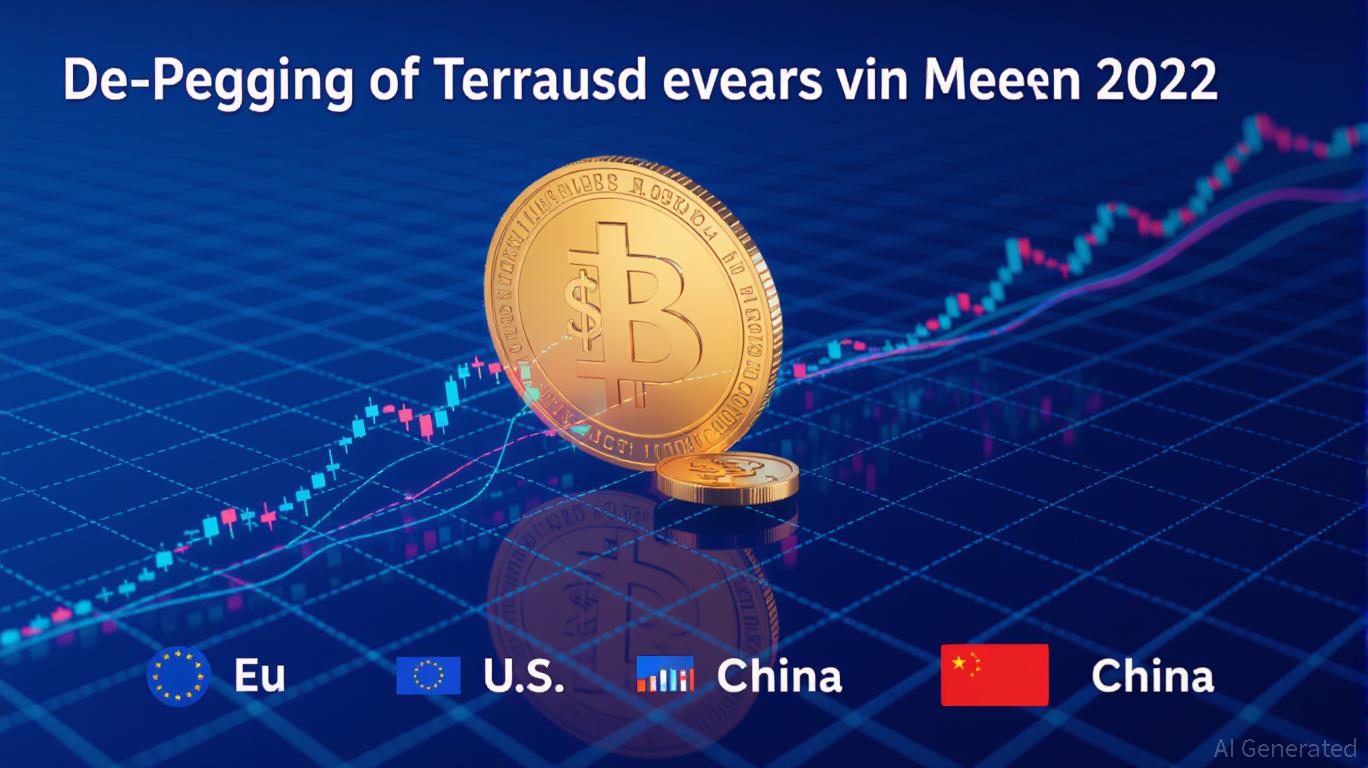IPG Photonics and the Future of Directed-Energy Defense: A Strategic Play on Drone-Centric Security Demand
- IPG Photonics is pivoting from industrial lasers to directed-energy defense, launching the CROSSBOW laser systems to counter drone threats. - Its 3 kW HEL system has neutralized over 100 drones, offering low-cost, scalable solutions validated through partnerships like Lockheed Martin's Sanctum C-UAS. - The C-UAS market's projected 10%+ annual growth and IPG's strategic advantages position it as a disruptive force in multi-domain defense strategies. - Investors face opportunities and risks as IPG leverage
In an era where the proliferation of small drones has transformed from a technological marvel into a security menace, the defense industry is racing to develop solutions that can counter these threats with precision, speed, and cost-effectiveness. At the forefront of this evolution is IPG Photonics , a company long known for its dominance in industrial laser technology but now pivoting aggressively into the realm of directed-energy defense. The company's recent launch of the CROSSBOW MINI 3 kW high-energy laser (HEL) system, coupled with strategic partnerships like its collaboration with Lockheed Martin , positions IPG as a pivotal player in the rapidly expanding counter-unmanned aerial systems (C-UAS) market. For investors, this represents a compelling case study in how a traditional technology firm is reinventing itself to capitalize on a high-growth, mission-critical sector.
From Components to Systems: IPG's Strategic Reimagining
For decades, IPG Photonics has been a supplier of fiber lasers and amplifiers, powering industries ranging from manufacturing to medical devices. But the company's recent foray into defense systems marks a fundamental shift. By transitioning from a component provider to a full systems integrator, IPG is leveraging its core competencies in laser technology to build end-to-end solutions tailored for modern security challenges. The CROSSBOW product line—encompassing the 500 W Dazzler, the 3 kW HEL, and the upcoming 8 kW HEL—exemplifies this strategy. These systems are not just hardware; they are scalable, modular, and designed to integrate seamlessly with existing command-and-control networks and radar platforms.
The CROSSBOW MINI 3 kW HEL, in particular, has demonstrated field-proven efficacy. It has already neutralized over 100 drones in real-world scenarios, including both single-target and swarm attacks. This track record is critical in a market where reliability and performance are non-negotiable. Unlike traditional kinetic defenses (e.g., missiles or bullets), which are costly and logistically complex, IPG's laser systems offer a near-zero marginal cost per engagement. This economic advantage, combined with the ability to operate for 12 hours on internal battery power and extend missions with external power, makes the CROSSBOW systems a disruptive force in the C-UAS landscape.
Strategic Alliances and Market Validation
IPG's partnership with Lockheed Martin further validates its technological and strategic credibility. Lockheed has integrated the CROSSBOW system into its Sanctum C-UAS solution, a layered defense architecture designed to detect, track, and neutralize small drones. In recent field demonstrations, the IPG system was successfully cued by Fortem R30 radar to engage a Group 1 UAV at over 700 meters—a testament to its precision and operational readiness. Tyler Griffin, Lockheed's C-UAS Director, has emphasized the importance of such integrated, scalable solutions in modern defense ecosystems. For IPG, this collaboration is more than a technical endorsement; it's a gateway to broader adoption across military and civilian infrastructure sectors.
The U.S. Department of Defense's push for multi-domain defense strategies, which prioritize directed-energy weapons, adds another layer of tailwinds. IPG's systems align perfectly with this vision, offering a cost-effective, scalable alternative to traditional air defense. Moreover, the company's ability to mitigate trade tariff impacts through operational adjustments ensures that its systems remain competitive in both domestic and international markets.
Market Dynamics and Investment Implications
The C-UAS market is projected to grow at a compound annual rate of over 10% through 2030, driven by escalating drone threats in both military and civilian contexts. IPG's entry into this space is not just timely—it's transformative. While the company has not yet broken out C-UAS revenue separately, its Q2 2025 results highlight a 21% growth in “other applications,” a category that now includes its directed-energy systems. Management has also signaled that C-UAS will be a key driver of future profitability, with the CROSSBOW product line positioned to unlock “significant value for customers.”
For investors, the question is not whether the C-UAS market will grow, but whether IPG can capture a meaningful share of it. The company's competitive advantages—technological leadership, strategic partnerships, and a scalable product roadmap—suggest it is well-positioned to do so. However, risks remain. Trade policy uncertainties, regulatory hurdles, and competition from established defense contractors could temper growth. Yet, IPG's ability to innovate rapidly and its cost structure (which benefits from its industrial laser heritage) give it an edge in a sector where agility and affordability are increasingly valued.
A Must-Watch in the Defense Tech Sector
IPG Photonics' journey from industrial laser giant to integrated defense systems provider is a masterclass in strategic reinvention. The CROSSBOW MINI's field-proven efficacy, combined with its scalable deployment model and partnerships with industry leaders like Lockheed Martin, underscores the company's potential to dominate a niche but critical segment of the defense market. For investors seeking exposure to the next frontier of security technology, IPG offers a compelling blend of innovation, execution, and long-term growth potential.
As the world grapples with the dual challenges of technological proliferation and security vulnerability, companies like IPG Photonics are not just adapting—they're leading the charge. The question for investors is whether they're ready to follow.
Disclaimer: The content of this article solely reflects the author's opinion and does not represent the platform in any capacity. This article is not intended to serve as a reference for making investment decisions.
You may also like
Top 4 Bullish Cryptocurrencies in 2025: ETH, XRP, HYPE, and BlockDAG
- 2025 crypto market prioritizes projects with strong tech, utility, and institutional backing, led by ETH, XRP, HYPE, and BlockDAG. - Ethereum's Pectra upgrade boosted scalability, attracting $145B in RWA tokenization and 5% ETF absorption via improved Layer-2 solutions. - XRP gained $1.2B ETF inflows post-regulatory clarity, while Hyperliquid's $43–$44 price range reflects demand for fast, low-cost DeFi trading. - BlockDAG's 15,000 TPS hybrid PoW-DAG architecture and $383M presale position it as a scalab

Shiba Inu's $0.000020 Breakout: Speculative Hype or Strategic Inflection Point?
- Shiba Inu (SHIB) hovers near $0.000020 amid debates over whether its price surge reflects speculative hype or genuine ecosystem-driven value. - Shibarium's 1.5B+ transactions and 30% gas fee cuts correlate with SHIB's resilience, suggesting utility-driven demand despite 39% volume declines. - Deflationary burns reduced supply by 41% in 2025, but macroeconomic factors and whale activity remain key volatility drivers for the token. - Ecosystem expansion into AI, gaming, and metaverse projects aims to trans

The New Gold Rush: Capital Efficiency and Presale Dynamics in Q4 2025 DeFi
- Q4 2025 DeFi balances institutional stability with speculative presales, driven by capital efficiency metrics reshaping asset allocation. - Core-satellite strategies allocate 60-70% to ETH/AAVE (36.4%-72% gains) and 20-30% to high-yield presales like Remittix ($HYPER) offering 205% APY. - Bitcoin DeFi TVL hits $5-6B BTC via layer-2 solutions, while omnichain platforms and AI tools redefine liquidity and institutional adoption. - High-risk presales (e.g., MAGACOIN FINANCE's $12.8M raise) highlight innovat

Stablecoin Systemic Risks and Regulatory Gaps: Implications for Global Investors
- Stablecoins face structural fragility and regulatory divergence, risking systemic collapse amid fragmented global oversight. - Algorithmic models like UST and USDC exposed liquidity mismatches, with algorithmic failures causing $200B+ losses in hours. - EU's MiCA enforces reserve transparency while U.S. GENIUS Act lacks consumer protections, creating uneven investor risk landscapes. - China's state-controlled stablecoins and global DeFi adoption highlight growing systemic risks, including 63% crypto crim
